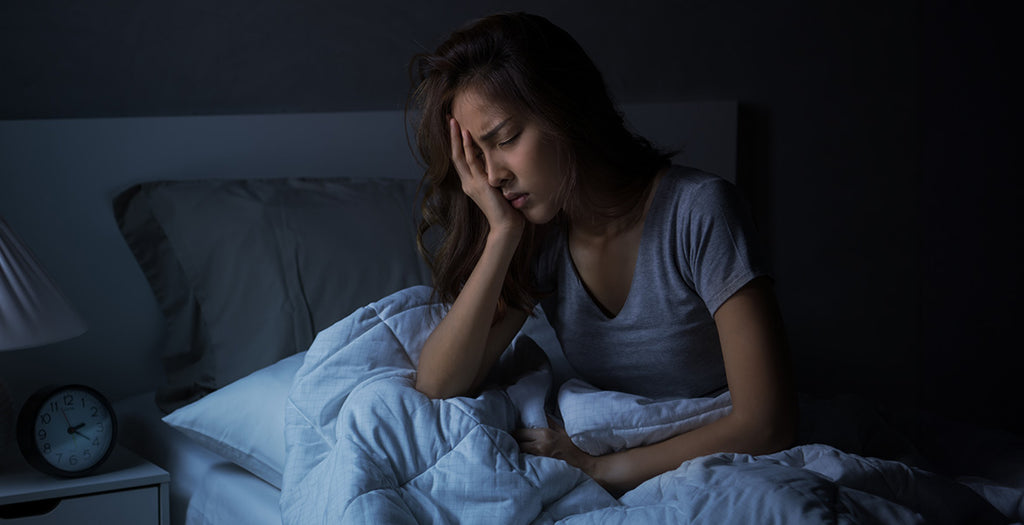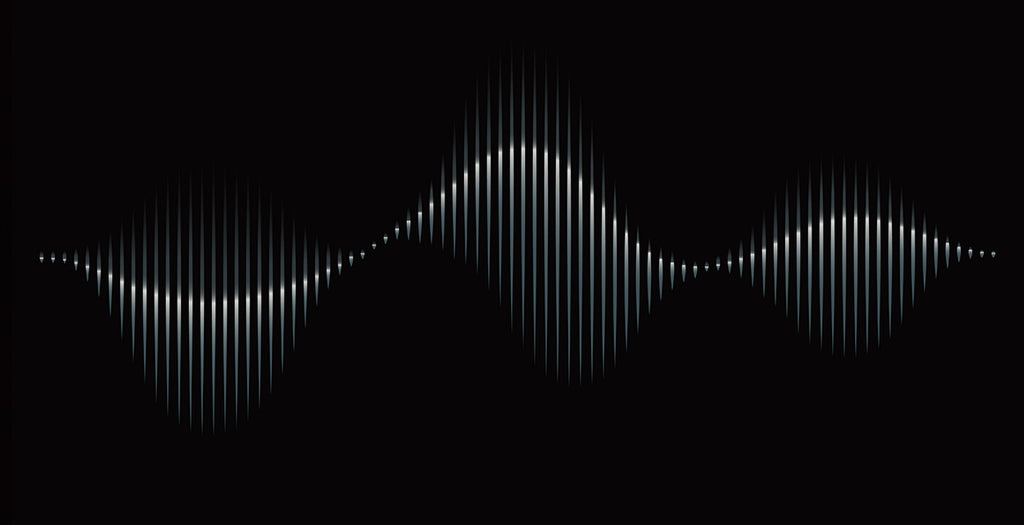Do you find yourself tossing and turning at night, unable to fall asleep despite feeling exhausted? You're not alone. Insomnia affects up to 70 million adults in the United States. While medications can help in the short term, they often lose effectiveness over time and can cause side effects. A natural, safe solution to insomnia is white noise.

White noise is a constant, unobtrusive background sound that helps cover up other noises that may disrupt sleep. It works by reducing the difference between background sounds and peaks of noise that catch your attention. This blog post will cover everything you need to know about using white noise to improve sleep.
What Is White Noise?

White noise refers to a random noise signal with a flat frequency spectrum. In other words, it contains equal power within a fixed bandwidth at any center frequency. Just as white light comprises all visible frequencies of light, white noise is a compilation of all audible frequencies of sound.
The name "white noise" originates from analog television static - the fuzzy, grayish-white pattern seen on TV screens when no transmission signal is obtained. This visual static represents random electrical fluctuations that translate into randomly fluctuating sound frequencies. This establishes the auditory sensation we call white noise.
Typical examples of white noise include:
- The hum of an air conditioner or fan motor - These appliances produce a blend of sound frequencies across the audible spectrum, creating a consistent neutral backdrop.
- The rumble of a washing machine or clothes dryer - The combined mechanical vibrations yield a steady, thunderous drone.
- The patter of falling rain - Raindrops striking surfaces produce overlapping drops spanning a wide range of pitches.
- Crashing ocean waves - Each wave produces a unique mix of noises as it breaks, aggregating into a consistent rushing swell.
The defining quality of white noise is its uniformity over the audible frequency range. This uniformity enables it to mask intrusive noises that stand out against an otherwise quiet background.
By filling in the ambient silence, white noise minimizes disruptive noises that may jolt someone awake or break concentration. It creates a neutral sonic backdrop against which irregular sounds fade into the whole.
Benefits of White Noise
Incorporating white noise into your daily routine can provide a variety of benefits beyond just promoting better sleep. Here are some of the top advantages that white noise offers:
Improved Sleep Quality
White noise masks disruptive nighttime noises, allowing you to fall asleep faster and enjoy deeper, uninterrupted sleep cycles. Sudden noises can trigger your nervous system's startle response, jolting you out of restful stages of sleep. White noise minimizes these disturbances, creating a cocoon of calm that enables sleeping through noises that might otherwise awaken you. Over time, this leads to improved sleep quality.
Enhanced Focus and Concentration
The neutral sonic backdrop provided by white noise suppresses distracting sounds around you, promoting greater focus and concentration. Unexpected noises pull your attention away from mentally demanding tasks. White noise fills in these gaps so you can tune out ambient disturbances and zero in on the task at hand uninterrupted, whether studying, reading, or working.
Tinnitus Relief
For those suffering from tinnitus, white noise can provide masking relief for buzzing, ringing, or roaring ear noises. Tinnitus distresses sufferers by making them overly aware of phantom sounds inside their ears. White noise introduces an external noise source that helps cover up internal tinnitus noises. This external masking sound decreases consciousness of tinnitus symptoms. The result is a reduction in annoyance and anxiety associated with the condition.
Calming, Relaxation Effects
The consistent, thunderous roar of white noise has inherent calming properties for both children and adults. It can effectively lower stress levels and trigger relaxation responses by muting intrusive noises that create unease. The utter neutrality of white noise means it does not jar the nervous system like sudden loud noises. Rather, it produces a harmonious calming sensation ideal for unwinding or lulling infants to sleep.
How Can White Noise Help You Sleep?
There are several key ways that white noise can enhance your ability to fall asleep and stay asleep throughout the night:
Blocks Disruptive Noises
Sudden unpredictable noises like slamming doors, traffic, barking dogs, or a snoring partner can instantly wake light sleepers. White noise masks these disruptions by filling in gaps between noises with a constant muted roar. This prevents sporadic nighttime noises from rousing you from your slumber, allowing you to sleep undisturbed.
Promotes Relaxation
The soothing, thunderous rumble of white noise helps calm a restless mind before bed. For those who struggle to shut off racing thoughts at night, white noise provides a soothing backdrop that facilitates relaxation. By tuning attention to the neutral drone of white noise, you can quiet mental chatter, unwind tense muscles, slow busy thoughts, and prime your body for sleep.
Reduces Night Wakings
A variety of noises like creaking doors, rattling pipes, passing trains, or pets moving around can jar you out of sleep during the night. White noise camouflages these disruptions so your sleep stages remain uninterrupted. Sleeping through ambient noises allows your sleep cycles to progress naturally rather than being cut short.
Aids Light Sleepers
Light sleepers often have difficulty staying asleep because subtle noises easily rouse them. White noise masks these ambient sounds so light sleepers remain undisturbed. The masking noise insulates them from noises their ears would otherwise detect, preventing wakings.
Soothes Babies
For infants used to the constant hum inside the womb, white noise mimics those comforting, muffling sounds they knew before birth. Sudden loud noises easily startle and wake babies. White noise masks these abrupt sounds, soothing fussy babies to sleep. It reminds them of their time in the womb while covering external noises.
With its multifaceted sleep benefits, it's clear why white noise therapy is a doctor-recommended natural insomnia cure. Finding the optimal white noise sound, volume, and listening method can lead to vast improvements in your quantity and quality of sleep.
Is White Noise Harmful?
Despite its benefits, some people worry whether constant white noise exposure can be harmful. Here are the potential risks associated with white noise:
- Hearing loss - Too loud or prolonged exposure to white noise has been linked to permanent high-frequency hearing loss. This is also called noise-induced hearing loss (NIHL). Babies and small children are most at risk. Care should be taken to use the lowest effective white noise volume.
- Speech development - A 2014 study in infants found delayed speech development associated with white noise usage. This may be due to reduced language exposure if the white noise masks human speech. However, this risk can be mitigated by ensuring conversation remains audible over the white noise.
- Sleep rebound - Abrupt cessation of consistent white noise exposure can lead to sleep disruption. Without the noise masking, sudden sounds can jar a white noise user awake. Tapering off dependence is recommended to avoid rebound insomnia.
- Tinnitus habituation - White noise risks reinforcing a user's focus on tinnitus symptoms rather than promoting habituation. For chronic tinnitus management, sound therapy techniques that allow the brain to tune out noises may be preferable.
While further research is still needed, these risks seem confined to prolonged exposure at loud volumes. There is no evidence that occasional, judicious use of white noise at reasonable levels poses any harm. As with any intervention, moderation is key.
When to Consider Earplugs for White Noise?
While white noise can promote better sleep, some users have trouble tolerating the sound or finding an appropriate volume. In these cases, pairing earplugs with white noise can optimize the benefits:
If Your Partner Is Bothered
Even if white noise helps you sleep better, the constant drone may disrupt your bed partner. Wearing earplugs allows you to keep benefiting from the white noise without disturbing anyone else in the room.
When Noise Levels Get Too High
Trying to mask excessively loud disruptive sounds can require raising white noise to uncomfortable volumes that exceed recommended limits. Earplugs enable blocking additional noise so that white noise can be kept at a moderate, soothing volume.
Traveling With Roommates
In a shared accommodation like a hotel or hostel room, playing white noise aloud would interfere with roommates' sleep. Earplugs allow privately listening to white noise at a low volume without disturbing anyone.
Sound Sensitivity
For those extra attuned to noises, even low-level white noise can feel abrasive. Combining earplugs with white noise softens the intensity, making it more tolerable for noise-sensitive people or hyperacusis sufferers.
Side Sleeping

Earplugs also enable comfortable side sleeping while listening to white noise. Without them, earbuds tend to dislodge when pressure is applied. Earplugs remain securely in place all night.
When considering earplugs for white noise, choose options designed for comfort and noise blocking. With the right pair, earplugs can optimize white noise benefits without compromising sleep quality.
Conclusion

White noise can be an excellent natural sleep aid if used properly. The key is finding a comfortable volume and sound that masks disruptions without becoming a disturbance itself. While overuse risks exist at very loud volumes, moderate white noise exposure generally poses little risk for adults. Children, particularly infants require more caution with lower noise levels and limited exposure time.
If you struggle with insomnia or nighttime noise disruptions, try incorporating white noise. Along with good sleep hygiene habits like limiting blue light exposure at night, it can significantly improve your sleep quality without medications.
Read More
- Do Noise-Canceling Earplugs Work? – hearprotek
- Is It Safe to Sleep With Noise-Canceling Earplugs? – hearprotek
- 10 Everyday Noises You Can EliminateWith Noise Reducing Earplugs – hearprotek
- The Ultimate Guide to Wearing (and Choosing) Ear Plugs – hearprotek
- Sleep Soundly with Noisy Roommates: 9 Hacks for Quality Rest – hearprotek












